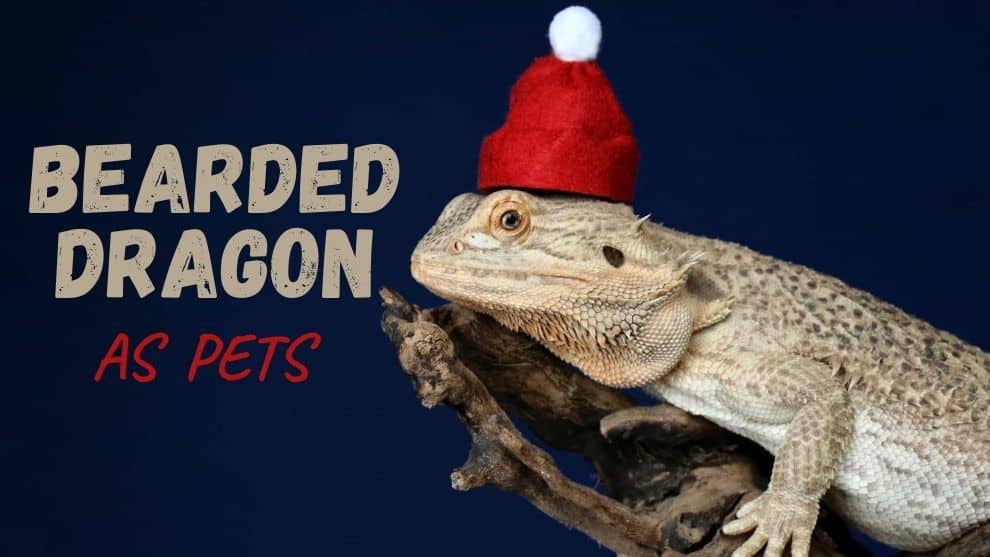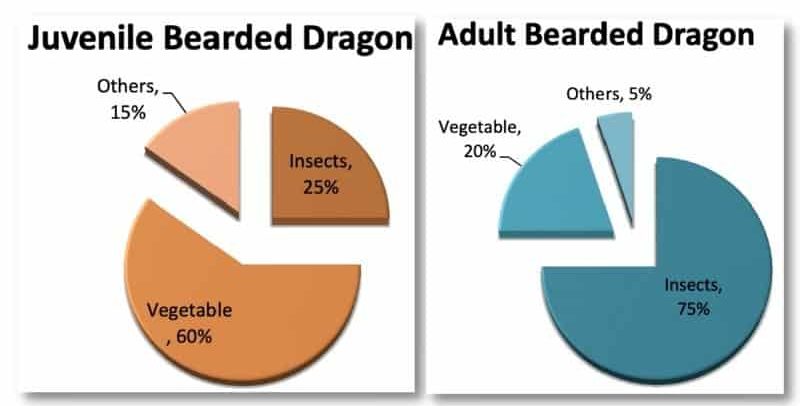Bearded Dragons As Pets – Everything You Need To Know

Sub Categories
| • Habitat | • Care & Grooming |
| • Behavior | • Diet |
| • Training | • Breeding |
| • Health & Diseases |
Bearded dragons have gained much popularity due to their unique features around the globe. Due to their playful and placid nature, they are loved by their owners. However, if you are new to planning to have a bearded dragon and know nothing about keeping this wonderful creature as a pet, this article will be really helpful. In this article, we are going to discuss:
What Is Bearded Dragon
Bearded dragons or Pogona vitticeps fall in the family of lizards. Generally, they have the following specs:
Bearded Dragon Scientific Classification
| Mass | 280-510 g |
| Scientific Name | Pogona |
| Family | Agamidae |
| Order | Scaled Reptiles |
| Class | Reptilia |
| Kingdom | Animalia |
Anatomy Of Bearded Dragon
Bearded dragons are long-tailed lizards with spiky colour and multiple variations in colours. Most bearded dragons grow up to 45 cm or 18 inches in total length in all these years. Males get to grow larger than lizards. The average life span of a bearded dragon is 10-15 years.
Habitat of Bearded Dragon
Bearded dragons first came from the forests of Australia. However, now they have been distributed and domesticated all over the world. The best thing about this pet is that it can survive in any habitat. Bearded dragons are cold-blooded animals, so that they can adjust to a variety of climates. It means that their body temperature can change concerning their surroundings. This called for much larger ranges of suitable room temperatures, demanding less effort in caring & grooming your bearded dragon.
Care And Grooming Of Bearded Dragon
Of all the pet reptiles, bearded dragons are among the most common, easy to groom, and handle lizards. They are entirely safe for minor children and can go well with your lifestyle with a bit of training. These are typically very social, love to be handled or interacted with, and completely docile.
They have a sleep cycle comparable to that of humans, making this pet go well with the owner’s schedule. Moreover, like most furry fellas, these lizards do not fall into depression from loneliness. However, you still need to take care of the proper diet of your bearded dragon, clean its tank regularly, maintain the right temperature and humidity of the area housing the bearded dragon’s tank, bath, and focus on the oral health of the bearded dragon.
If you do not focus on the hygiene of your bearded dragon will smell really putrid.
Behaviour Of Bearded Dragon
The bearded dragon is an entirely docile creature and loves to live in its zone. They usually do not hurt their human fellows, but you may probably get a bite from a bearded dragon if you go overboard. However, the odds are less than having a scratch from a cat. Moreover, in the worst-case scenario, the bone may break; however, it rarely happens. These creatures are not lazy but love to cuddle and interact with their owners a lot. Therefore, they make really good pets.
Bearded dragons exhibit extraordinary behaviours as swimming of the bearded dragon is just like that of the crocodile. If your beardie is not habitual of swimming, you may introduce it, after which it will become a great exercise activity for your little friend. Moreover, the Bearded dragon also shed and change their physical appearance a lot during the process. The more you learn about your beardie, the more you will discover the amazing behaviours of your pet.
Diet Of A Bearded Dragon
Bearded dragons eat a variety of food. The diet pattern of bearded dragon varies a lot with age. The diet of bearded dragon varies with age. You need to include more meat portions at a younger age; however, in an adult bearded dragon, you may increase the plant-based products more.

Feeding frequency is mostly case specific. However, as for the general rule, you may provide two balanced meals per day. You may also include fruits in the diet of your bearded dragons as delicious treats. However, increasing the content of high sugar foods in the diet of the bearded dragons may pose a severe health risk, including diarrhea, dehydration, obesity, etc. There are multiple food options based on plant products as parsley, celery, raspberry, broccoli, cantaloupe, broccoli, apples, grapes etc. Make a heterogenous salad bowel and use fruit chunks as a topping to give colours and incite the hunger of your bearded dragon.
Moreover, you have to maintain an adequate supply of water and balance the number of macros in the diet of your bearded dragon.
Bearded Dragon’s Training
Bearded dragons can be easily trained for multiple objectives. The incentive in the whole training process of a bearded dragon is food. You can train your bearded dragon for various things, including
- Potty Training
- Drinking From a Water Bowl
- Coming to you when called
- Bonding
- Fun & Mental Stimulation (Games)
- Getting Used to a New Owner
Breeding of Bearded Dragons
Bearded dragons can be bred by considering special conditions. Moreover, before breeding, you need to be sure of the breed of parent beardie so that you may be sure of fetal breed. Having a pure breed of a bearded dragon is always a good idea. Pure breed bearded dragons are healthier and have better immunity from infections, exhibit better training behaviours and so on. So, better get your parent beardie from an authorized breeder. Following are the most popular breeds of bearded dragon
- Citrus leatherbacks
- Rainbow Dunners
- Citrus tigers
- Witblits
- Orange leatherbacks
- Hypo citrus tigers
- Red bearded dragons
- Hypo citrus Dunners
- and a lot more other breeds of bearded dragons
Moreover, before setting up the breeding, you need to maintain the environmental conditions, like temperature must be between 77-88 degree Fahrenheit. The central basking spot should be 105 degrees Fahrenheit. You need to provide a balanced diet and a good supply of calcium. Moreover, you need to have enough room for your adult bearded dragons to co-habitat, UVB lightning, and an appropriate period of decreased temperature and daylight hours. One thing you need to remember while considering successful breeding is that both male and female should be of equal size.
Moreover, the female must be at least 350 grams of weight. The female bearded dragon lay 4 to 6 eggs. You will also be separating the pair after breeding.
Health and Diseases In Bearded Dragon
It would be best if you focused a lot on the health of bearded dragon. Your beardie may easily fall prey to malnutrition, and week bearded dragons are always vulnerable to infections. Following are the most common diseases of the bearded dragon.
- Obesity
- Metabolic Bone Disease
- Yellow Fungus
- Upper Respiratory Infection
- Pneumonia
- Parasites
- Cancer
- Mouth Rot(Infectious Stomatitis)
- Paralysis
- Impaction
- Retained Shed
- Tail Rot
- Diarrhea
- Throwing Up
- Sunken Eyes
- Wrinkly Skin
- Lethargy
- Lack of Appetite
- Sunken Fat Pads
- Hepatitis
- Renal Impairment.
Conclusion
Bearded dragons make great pets. However, along with being low maintenance, you need to focus on them being healthy and follow hygienic conditions. You may also train your beardie for multiple purposes and enjoy the cuddle and friendliness of this fantastic reptile. Remember, a healthy diet is a key to preventing your beardie from various diseases and strengthen its immunity. Connect to other topics from the same series to learn all about keeping a bearded dragon as a pet. If you still have any query you may contact us; we would be happy to help.

